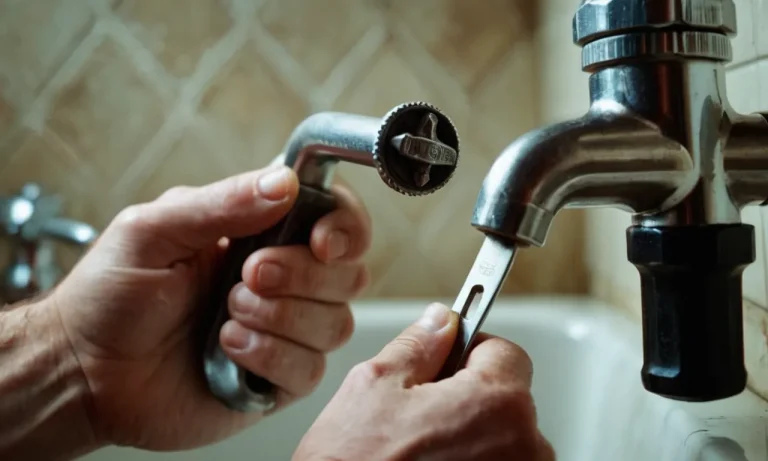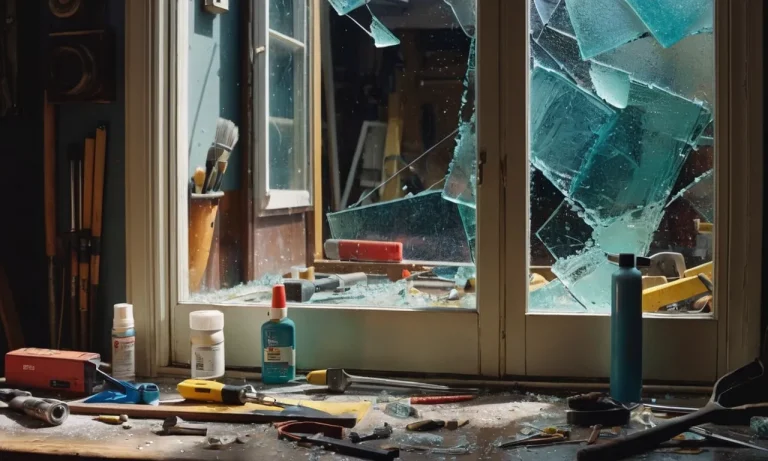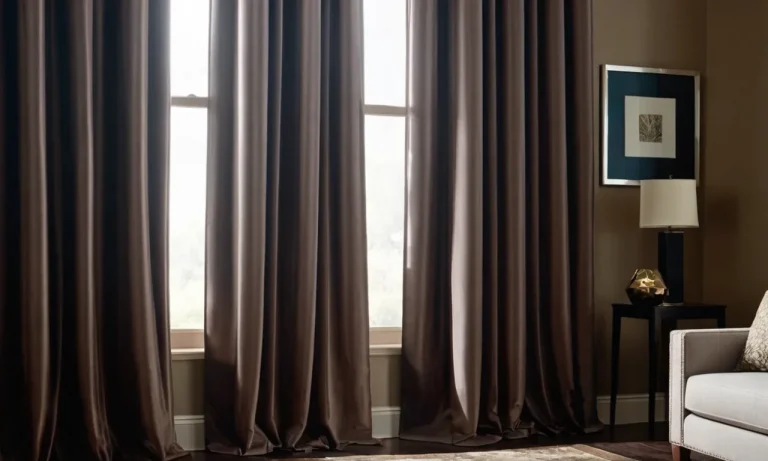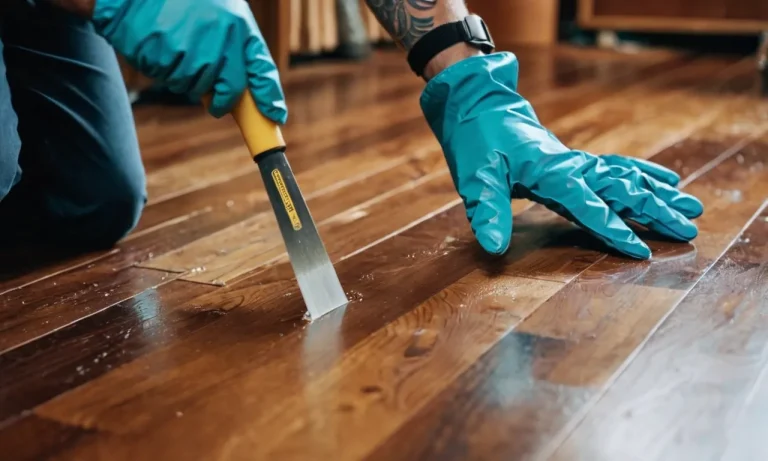Why Is There Water On The Passenger Side Floor After Rain?
During rainy weather, many drivers have experienced the annoyance of finding standing water on the front passenger side floor of their vehicles. If you’ve asked yourself “why is there water on my passenger side floor after rain?”, you’ve come to the right place.
If you’re short on time, here’s a quick answer: Water on the passenger side floor after rain is most often caused by a clogged AC drain tube, a leak in the windshield seal, door seals, or cowl cover.
In this comprehensive guide, we’ll explore all the potential causes and solutions for water pooling on the passenger side floor of your car when it rains.
Checking the A/C Drain
One common reason for finding water on the passenger side floor of your car after rain is a clogged A/C drain. The A/C drain is responsible for removing the condensation that builds up in your air conditioning system.
When the drain is clogged, the water has nowhere to go and ends up leaking into your car.
How the A/C Drain Works
The A/C drain is a small tube located near the bottom of the car’s firewall. Its primary function is to drain the condensation that accumulates on the evaporator core, which cools the air inside your car.
As the moisture is removed from the air, it collects on the evaporator core and is funneled out through the drain. This prevents the moisture from entering the passenger compartment and causing water damage.
Signs of a Clogged Drain
There are several signs that indicate a clogged A/C drain. One of the most obvious signs is water pooling on the passenger side floor after rain. You may also notice a musty odor coming from your car’s vents or reduced cooling performance from your air conditioning system.
If you notice any of these signs, it’s important to address the issue as soon as possible to prevent further damage to your car’s interior.
Pro Tip: If you’re unsure whether the water on your passenger side floor is due to a clogged A/C drain, you can try running your air conditioning system and check if water drips from the drain tube underneath the car. If no water is coming out, it’s likely that the drain is clogged.
Unclogging the Drain
If you suspect that your A/C drain is clogged, there are a few steps you can take to unclog it. One method is to use a small, flexible brush or wire to gently clean out the drain tube. Be careful not to use excessive force, as you could damage the tube or other components of your A/C system.
Another option is to use compressed air to blow out any debris that may be blocking the drain. This can be done by inserting the nozzle of an air compressor into the drain tube and applying short bursts of air. Make sure to wear eye protection and use caution when working with compressed air.
If you’re uncomfortable performing these tasks yourself, it’s always best to consult a professional mechanic who can diagnose and fix the issue for you. They have the necessary tools and expertise to ensure the drain is unclogged properly.
Remember, addressing a clogged A/C drain is important not only for preventing water damage to your car’s interior but also for maintaining the overall performance of your air conditioning system. Regular maintenance and cleaning of the drain can help extend the lifespan of your A/C system and keep it running smoothly.
Inspecting Windshield and Cowl Cover
When water is found on the passenger side floor after rain, it is important to inspect the windshield and cowl cover for any potential issues. These components play a crucial role in keeping water out of the vehicle’s interior, and any damage or malfunction can result in water leakage.
Windshield Seal
The windshield seal is a rubber gasket that surrounds the edges of the windshield, creating a watertight seal. Over time, this seal can deteriorate due to exposure to sunlight, extreme temperatures, and general wear and tear.
If the seal is cracked or damaged, it can allow water to seep into the passenger compartment, leading to a wet floor. It is recommended to visually inspect the windshield seal for any signs of damage or looseness.
If any issues are detected, it is best to have it repaired or replaced by a professional.
Cowl Cover
The cowl cover is a plastic panel located at the base of the windshield, underneath the hood. It serves as a barrier between the windshield and the engine compartment, preventing water from entering the vehicle.
Sometimes, the cowl cover can become loose or damaged, creating gaps that allow water to infiltrate the passenger side floor. To check for any issues with the cowl cover, simply lift the hood and inspect the area around the base of the windshield.
Look for any signs of damage, such as cracks or missing pieces. If any problems are identified, it is advisable to have the cowl cover repaired or replaced to ensure proper water protection.
Clogged Cowl Drains
In addition to inspecting the windshield and cowl cover, it is also essential to check for clogged cowl drains. These drains are located at the bottom of the windshield, allowing water to flow out of the vehicle instead of accumulating in the cowl area.
Over time, debris such as leaves, twigs, and dirt can clog these drains, causing water to back up and enter the passenger compartment. To clear clogged cowl drains, gently remove any visible debris and use a small tool, like a plastic rod or pipe cleaner, to unclog the drains.
Regular maintenance of these drains can prevent water leakage and ensure a dry passenger side floor.
Remember, if the issue persists or if you are unsure about the cause of water on the passenger side floor, it is always best to consult with a professional mechanic or visit a reputable automotive service center.
They can provide expert advice and assistance in diagnosing and resolving the issue to keep your vehicle dry and in optimal condition.
Checking Door Seals
One of the common reasons for water on the passenger side floor after rain is faulty door seals. Over time, the rubber seals around the doors can wear out or become damaged, allowing water to seep into the interior of the car.
It is important to regularly check the condition of the door seals to ensure they are effectively keeping out water.
Door Seals
To check the door seals, start by visually inspecting them for any signs of wear or damage. Look for cracks, tears, or gaps in the rubber. If you notice any issues, it may be necessary to replace the seals.
Additionally, make sure the seals are properly aligned and that there are no obstructions preventing them from creating a tight seal when the doors are closed.
In some cases, simply cleaning the door seals can help improve their effectiveness. Over time, dirt and debris can accumulate on the seals, preventing them from forming a proper seal. Use a mild soap and water solution to clean the seals, and dry them thoroughly before closing the doors.
Door Drain Holes
Another potential cause of water on the passenger side floor is clogged door drain holes. These holes are designed to allow any water that enters the door to drain out. However, they can become blocked with debris, preventing proper drainage and causing water to accumulate inside the car.
To check the door drain holes, locate them along the bottom edge of the door. They are typically small openings that allow water to escape. Use a small tool, such as a pipe cleaner or a toothpick, to gently clear any debris from the holes.
Avoid using anything sharp or abrasive that could damage the seals or the door itself.
Regularly inspecting and maintaining the door seals and drain holes can help prevent water from entering the passenger compartment of your car. By taking these simple steps, you can keep your car dry and avoid potential damage to the interior.
Other Potential Causes
Sunroof Drains
In some vehicles, the sunroof drains may become clogged or blocked, leading to water leaking into the passenger side floor after rain. Sunroof drains are designed to channel water away from the vehicle, but over time, debris such as leaves and twigs can accumulate and cause blockages.
When this happens, the water may find its way into the interior of the car, including the passenger side floor. If you suspect that the sunroof drains are the culprit, you can try using a compressed air canister or a long, flexible wire to clear any obstructions.
However, if you’re unsure about how to proceed, it’s always best to consult a professional mechanic.
Plugs Under Carpet
Another potential cause of water on the passenger side floor after rain is the presence of plugs or grommets under the carpet. These plugs are typically installed during the manufacturing process to allow for drainage in case water enters the vehicle.
However, if these plugs become damaged or dislodged, water can seep through and accumulate on the floor. Inspecting the plugs under the carpet and ensuring they are in good condition can help prevent water from entering the passenger compartment.
If you find any damaged plugs, they should be replaced as soon as possible.
Aftermarket Accessories
Aftermarket accessories, such as audio systems or alarms, can also be a potential source of water leaks. Improper installation of these accessories can compromise the vehicle’s original seals and weatherproofing, allowing water to enter the passenger compartment.
If you recently had any aftermarket accessories installed, it’s worth checking their installation and ensuring they are properly sealed. If you suspect that an aftermarket accessory is causing the water leakage, it may be necessary to consult with the installer or a professional mechanic to address the issue.
It’s important to note that these are just a few potential causes of water on the passenger side floor after rain. If you’re experiencing this issue, it’s recommended to have your vehicle inspected by a qualified mechanic who can accurately diagnose the problem and provide the necessary repairs.
Remember, addressing water leaks promptly can help prevent further damage to your vehicle’s interior and electrical components.
Conclusion
Finding and fixing the source of water pooling on the passenger floor after rain can prevent mold, mildew, and dampness in your car. We hope this guide gave you a comprehensive overview of all the potential culprits and solutions.
The most common causes are clogged AC and cowl drains, as well as leaks from door and windshield seals. Check each of these areas thoroughly, make any necessary repairs, and you’ll be able to keep your interior dry.







